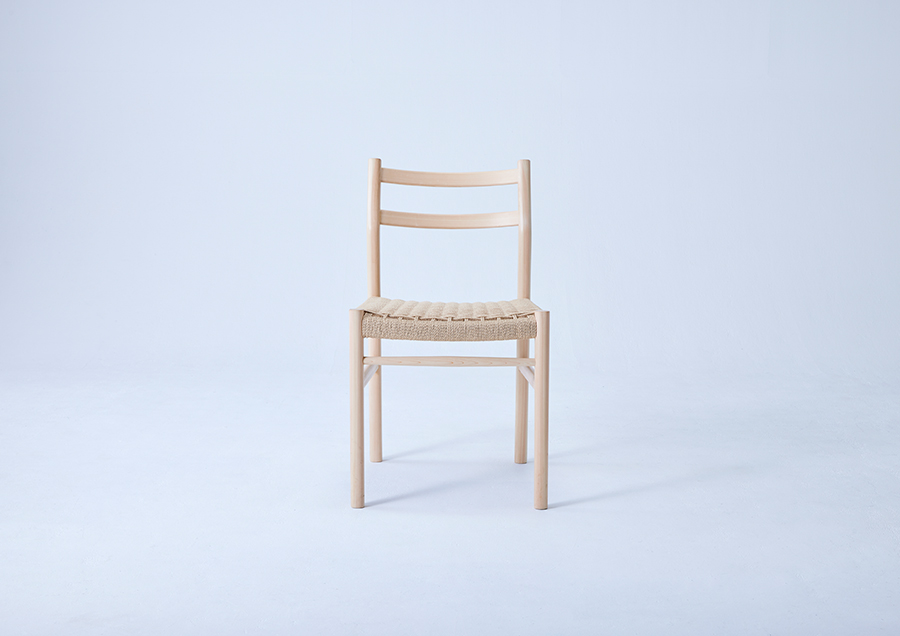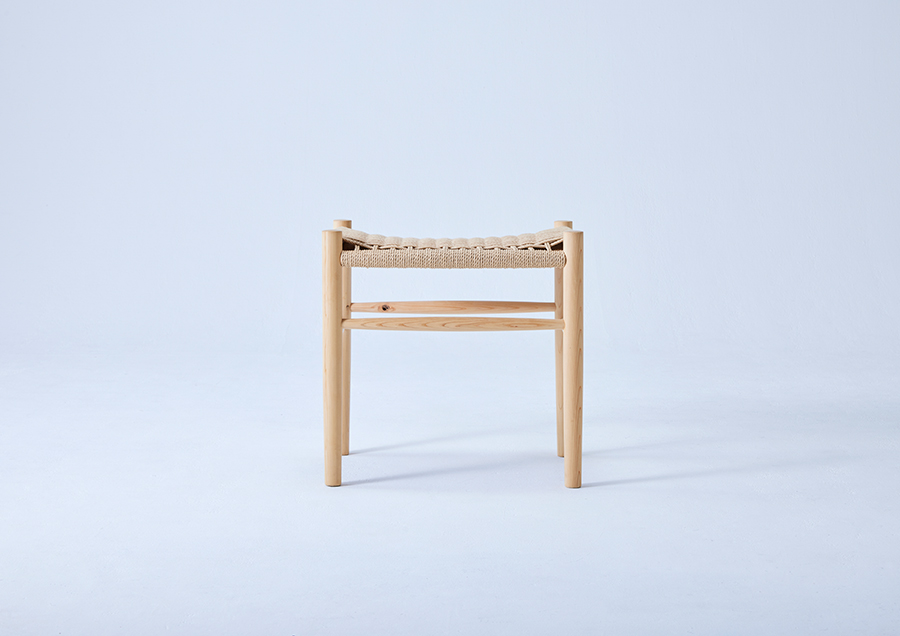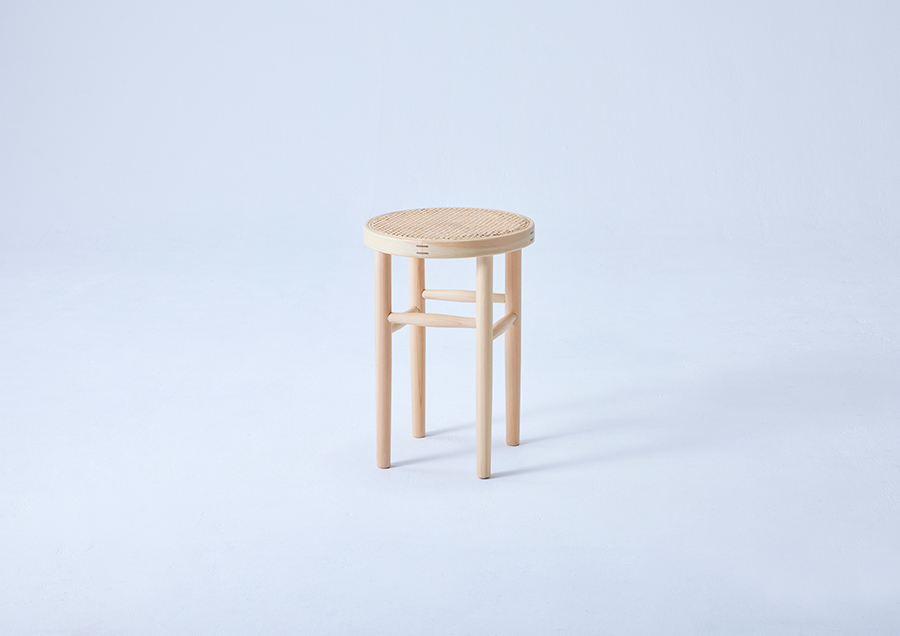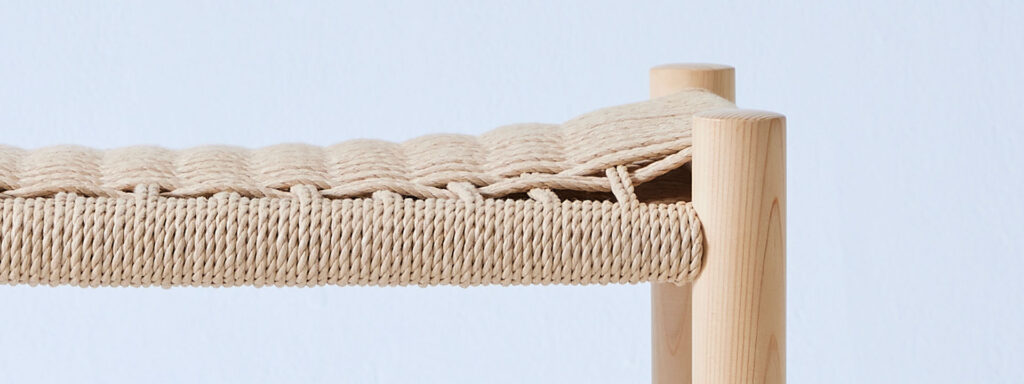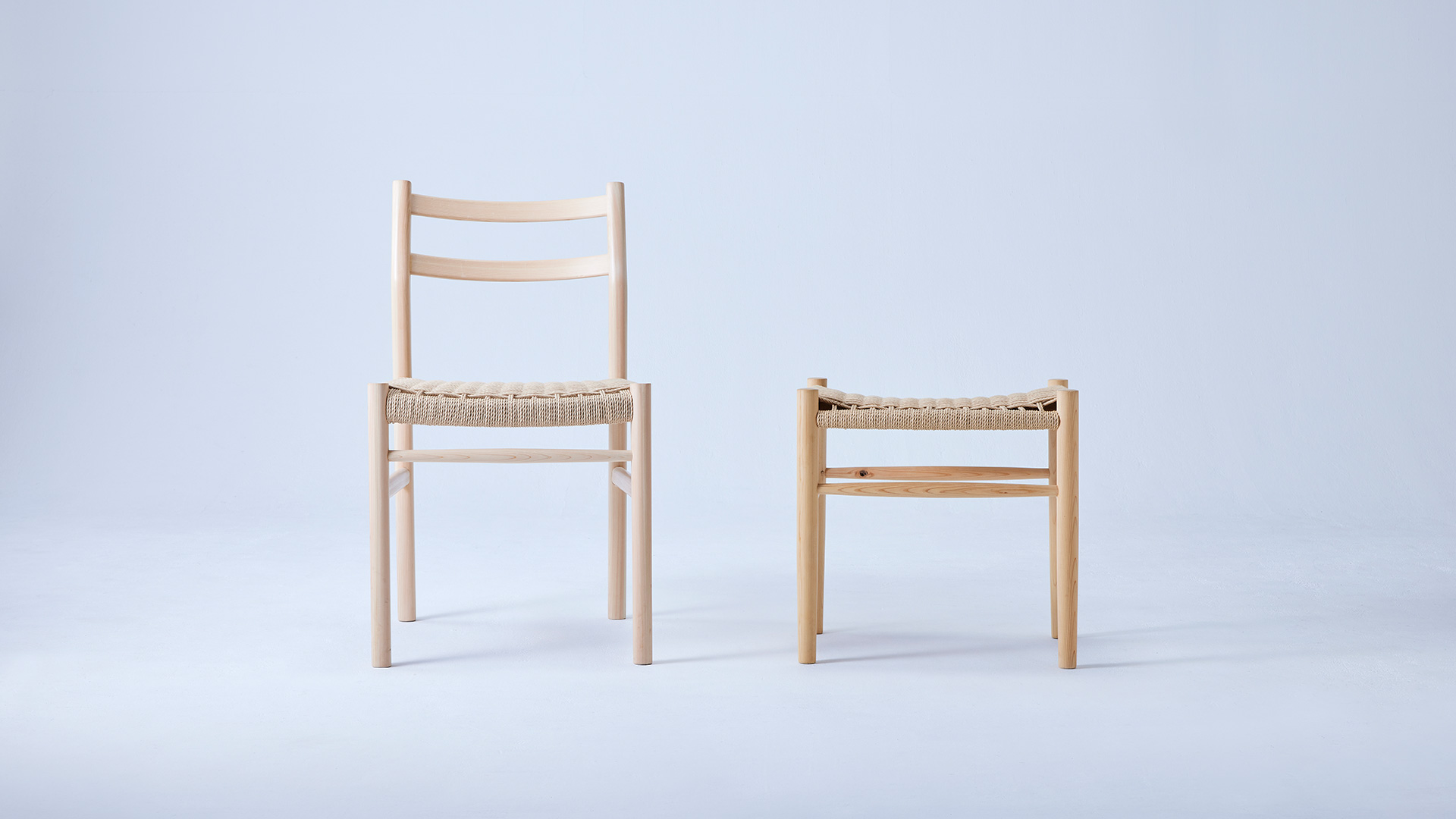
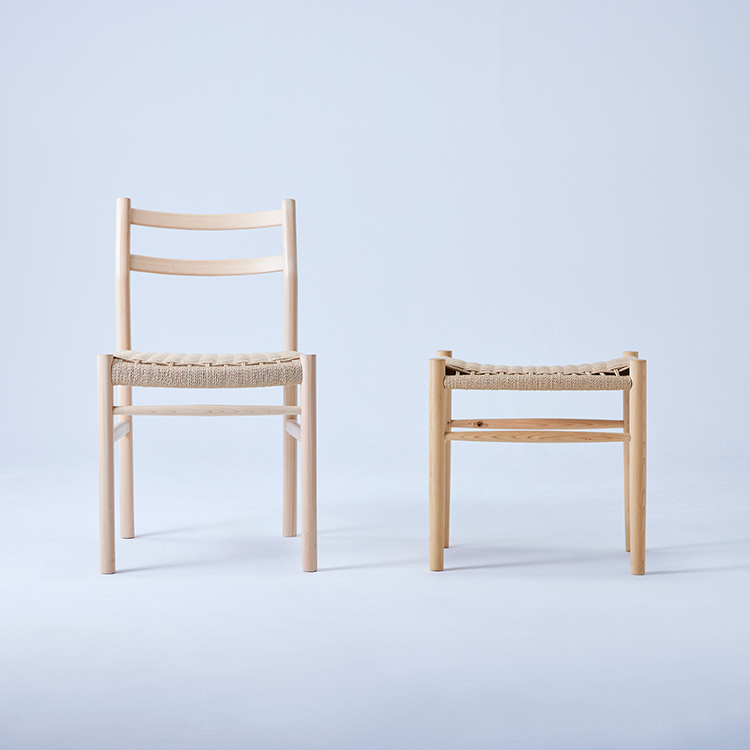
Izuru Mokko
Izuru Mokko, based in Yoshino, is dedicated to crafting chairs and wooden products using the region’s high-quality cedar and cypress. Our pursuit of authentically Japanese chairs led to the creation of a production kit made from Yoshino cypress. We cherish the Japanese tradition of ‘repairing and reusing’, and we are committed to continuing the legacy of sustainable resource development through Yoshino’s artificial forestry system. At Izuru Mokko, we are proud to combine Japan’s beautiful timber with traditional crafting techniques, producing products that deeply satisfy our customers.
Izuru Mokko, based in Yoshino, is dedicated to crafting chairs and wooden products using the region’s high-quality cedar and cypress. Our pursuit of authentically Japanese chairs led to the creation of a production kit made from Yoshino cypress. We cherish the Japanese tradition of ‘repairing and reusing’, and we are committed to continuing the legacy of sustainable resource development through Yoshino’s artificial forestry system. At Izuru Mokko, we are proud to combine Japan’s beautiful timber with traditional crafting techniques, producing products that deeply satisfy our customers.
Interview
What is a quintessentially Japanese chair? The production kit born out of this quest.
Takuma Fujikawa, President, Isuru Mokko Co., Ltd.
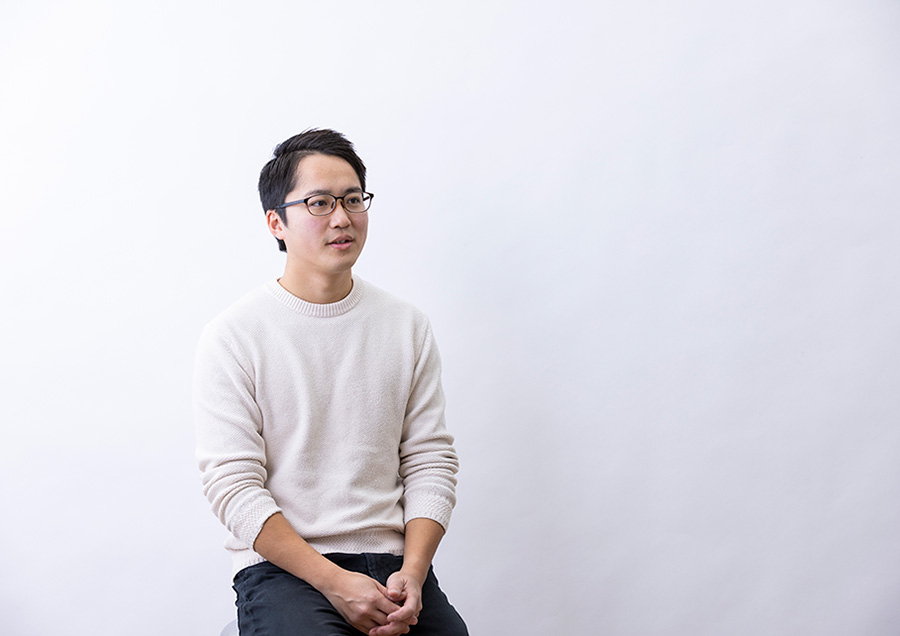
Falling in love with Yoshino cypress, I wanted to continue the Japanese culture of ‘repairing and reusing’.
ーーMr. Fujikawa, could you share with us about the items you create and your thoughts as a craftsman?
Fujikawa:I mainly make furniture, especially chairs, using Yoshino wood. I started my business out of a desire to use Yoshino cypress, but one reason for my focus on this wood is its superior quality. I also believe that the history of Yoshino forestry has significant meaning for the future world and society. So, it’s not just about furniture making; I’m also committed to activities that communicate about wood and Japanese culture.
ーーWhat inspired you to use Yoshino cypress?
Fujikawa:My father was a carpenter, and I grew up watching him. By middle school, I was already thinking about making furniture, and my first job in Osaka, my hometown, was in a woodworking shop. When I was considering starting my own business and exploring the countryside in neighboring prefectures, I encountered Yoshino timber. The beauty of Yoshino cypress captivated me at first sight.
Cypress is often said to lack the strength for furniture, but Yoshino cypress is exceptionally strong, making it suitable for furniture. That’s when I decided I wanted to make chairs out of Yoshino cypress.

ーーWhy did you specifically want to make chairs among all types of furniture?
Fujikawa:Simply put, I love chairs, and among all furniture, making chairs is the most challenging. That’s what makes it enjoyable for me. From a business perspective, there was no one making quintessentially Japanese chairs with Japanese wood. Originally, chairs were not a part of Japanese culture, but they have become an essential tool in our modern lifestyle. That’s why I wanted to embody what a truly Japanese chair would be.
ーーWhat, in your opinion, makes a chair quintessentially Japanese?
Fujikawa:In exploring this, I’ve been pondering what ‘quintessentially Japanese’ really means, and I still haven’t found the answer. I’ve been experimenting and searching by conducting indigo-dyeing workshops and exploring what constitutes Japanese lifestyle and culture.
One answer I’ve come up with is the Yoshino cypress chair production kit. A part of being quintessentially Japanese, I believe, is the culture of continually repairing and reusing, similar to how shoji screens are traditionally re-papered in homes. Through repeated use, the wood and the tools themselves become beautifully aged. Japanese old houses, for instance, look more beautiful with their blackened appearance after 100 or 200 years than when they are new.
I wanted people to experience this through chairs. However, to do that, they need to be able to repair them themselves. That’s why I decided to let them make their own chairs.
Considering Japan’s humid and hot climate, I chose materials suited to our environment. Interestingly, Yoshino cypress is highly resistant to mold, making it an ideal choice. For the seating, I opted for paper cord, a type of string made from paper. Japan has a tradition of using straw, like in thatched roofs, and paper cord, like straw, doesn’t retain moisture, making it cool in summer and warmer than wooden seats in winter.
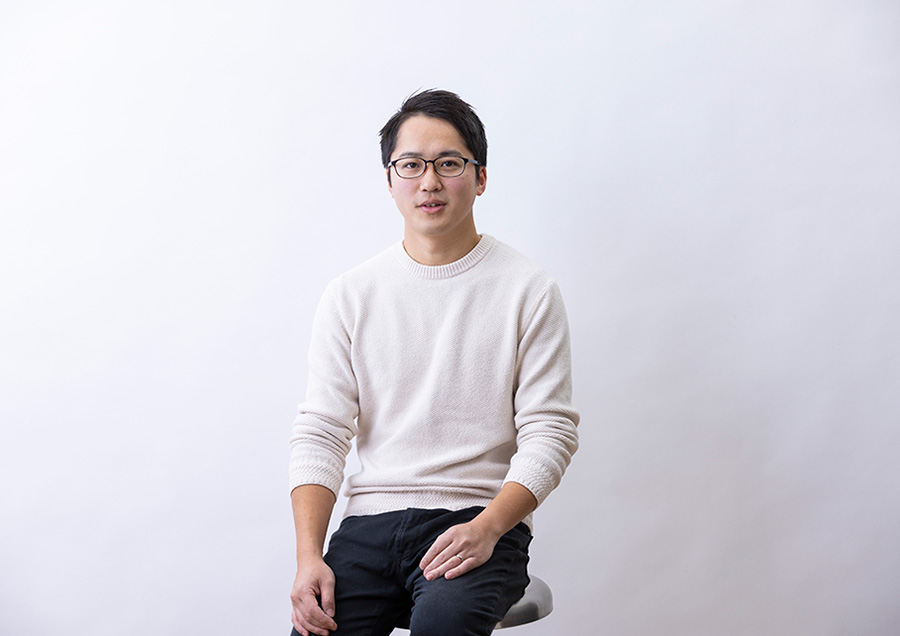
Yoshino’s 500-year-old artificial forestry system could be the answer to sustainable resource creation.
ーーEarlier, you mentioned that the history of Yoshino cypress has great significance for future society. Could you elaborate on this?
Fujikawa:Yoshino forestry is an artificial system. For 500 years, people have been planting, growing, and replanting trees, creating a cycle. I believe this system is very suited for our times as a sustainable resource. It’s already a complete system, and if adopted worldwide, I think it could greatly expand the use of timber. It could also be the answer to a system where forests and humans coexist.
Through our products and workshops, we communicate the effectiveness of the Yoshino forestry system. I would be happy if our customers, when choosing furniture, not only consider its cool style or affordability but also show interest in the kind of wood used.
In this regard, many people bought our Yoshino cypress chair kits because they looked stylish or cute. But it was significant for them to realize that furniture can be repaired by oneself. We’ve designed the kits to be time-consuming and challenging, so that people will feel a sense of accomplishment and attachment, hopefully leading them to want to repair and keep using their chairs. And, it would be great if this also sparks an interest in cypress and forestry.
ーーIn your life in Okuyamato, do you perceive a culture of valuing and repairing items?
Fujikawa:It’s not vividly present, but rather, I’d say the traces are there, on the verge of disappearing. While some people renovate old houses to live in, more often, old structures are demolished to make way for new ones, and wooden shutters are being replaced with stainless steel or aluminum. That’s why I want to gather as much as possible of the Japanese lifestyle and traditional culture while it’s still here.
In embodying the concept of a quintessentially Japanese chair, I want to continue exploring various aspects. At the same time, by increasing opportunities for customers to see and use chairs we’ve made, I hope our answers, in our own way, will have some impact on society.
Products

